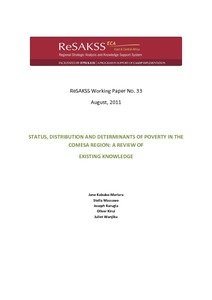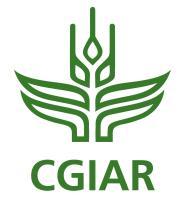Resource information
Poverty and vulnerability are among the major problems in Eastern and Southern Africa (ESA). To design appropriate poverty reduction initiatives for the region, it is not only important to understand the distribution of poverty but also the determinants. Various reports have documented information on the status, distribution and determinants of poverty in each of the countries. Nonetheless, not much information has been documented in a form that is easily accessible to decision makers and planners involved in designing and implementing programmes for addressing poverty reduction and food insecurity at the regional level. This paper reviews the existing knowledge on the status, distribution and determinants of poverty in the ESA region to fill that knowledge gap. It emerges from the literature that poverty in the region differs across socio-economic groups and across space. The existing poverty maps suggests that most districts and provinces whose poverty rates are lower than the national averages are located in rain fed mixed crop–livestock systems and that the highest proportion of them are in the humid and sub humid systems. High poverty rates also occur in the livestock only systems. About half of the poor provinces and districts fall in areas with short growing periods; this affects their agricultural potential. The areas are also constrained by market access. Investment in irrigation, improved water management and improved market access would play a vital role in these regions.
The review suggests that household level determinants of poverty in the region include, but are not limited to: household characteristics—family composition, size and structure, age and marital status of head, gender of the head, education and other human capital capabilities; access to basic services such as social amenities, water and sanitation, credit and infrastructure; employment, occupation and incomes; asset ownership; access to remittances; burden of disease; variations in agricultural production; and declining food stocks and high food prices. Community/regional/country level determinants include: geography and related factors such as market access, agro-ecological zones, climate and ethnicity; the environment; population density; area of residence (rural vs. urban); income, growth and inequality; conflict, insecurity and political instability; and governance and corruption. However, it is difficult to separate the determinants of community level poverty from the determinants at the household level. The review further suggests that the determinants of poverty are fairly robust across many COMESA countries. This suggests the need for a consultative approach to poverty reduction in the region.


